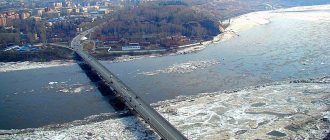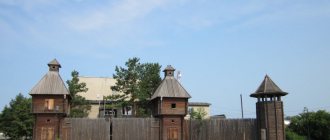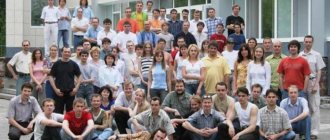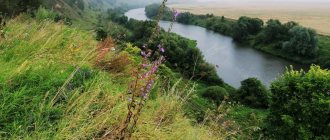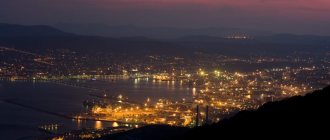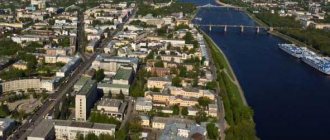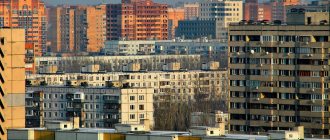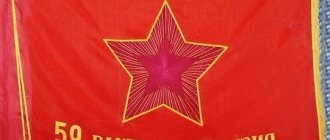Grozny
Video: Grozny from above
History of Grozny
In 1818, Russian troops founded a fortress on the territory of the modern city to suppress the resistance of the highlanders who did not want to join Russia. Although many Caucasian peoples voluntarily entered into an alliance with their northern neighbor or were at least neutral towards it, the Chechens did not want to give up their freedom and for several decades raised regular uprisings. During this time, Lermontov managed to serve in the Grozny fortress, and Leo Tolstoy came here.
Grozny in 1995
Military operations ceased only in 1859, after which Terek Cossacks settled in Grozny and the surrounding area. The military significance of the fortress was lost, but at the end of the 19th century the city became a major industrial center of the Caucasus thanks to the discovery of oil deposits. After the revolution, during the Civil War, the city passed from hand to hand until it was finally occupied by the Red Army in 1920. The status of Chechnya changed, while Grozny remained an autonomous city. In 1936, it became the capital of the Chechen-Ingush Autonomous Soviet Socialist Republic. During the Great Patriotic War, fascist troops approached Grozny, but were stopped. During their retreat, they managed to set fire to the oil fields so that even the Sunzha River, on which the city stands, was on fire. Firefighters extinguished the flames at the cost of numerous casualties. In memory of their feat, a monument was erected in 1968 - the figure of a hero fighting fire, as if with a monstrous snake.
With the liberation of the Caucasus, the hardships of the Grozny residents did not end: on February 23, 1944, the entire people were deported to Central Asia and Kazakhstan. The Chechens were rehabilitated and Grozny was returned to the status of the capital of the Chechen-Ingush Autonomy only in 1957. In 1991, after the division of Chechnya and Ingushetia, Grozny remained the capital of the first of the two republics. In 1994, the First Chechen War began; during the assault on Grozny, which lasted until March 1995, the city center was completely destroyed, and other parts were also very badly damaged. Bombings were repeated in 1999 during the Second Chechen War.
Since the beginning of the 2000s, the restoration of Grozny began. The construction of socially significant facilities continues to this day.
Grozny at night
Architectural sights of Grozny
Grozny is the center of the world
For historical reasons, most of the sights of the Chechen capital were built in the last decade. There are about 4 dozen fountains in Grozny, many of them are simply a vertical stream of water, but there are also unusual ones. Among the interesting ones is the musical fountain of Vladimir Putin, opened in 2010 on his birthday. The “Waterfall” near the Grozny City complex is a cascade of water that you can look at almost closely from a wooden bridge. “Running Wave” with illumination is open near the “Heart of Chechnya”. Grozny has its own Triumphal Arch, or more precisely, these are two arches standing next to each other with Vainakh towers at the edges, symbolizing the unity of Russia and Chechnya. Colorful steles are dedicated to the geographical location of the city: on the Garden Ring, based on the state symbols of Chechnya, there is a globe surrounded by the inscription “Grozny - the center of the world.”
Memorial to the Victims of Deportation
One of the most touching monuments, which has stood on Ali Mitaev Street since 1994, on the site of historical burials of Chechens, is now being moved to a new location. This sculptural image of a raised hand with a sword, surrounded by dozens of gravestones collected from all over the republic, is a symbol of grief and eternal memory of those killed during the expulsion from Chechnya.
Mosque "Heart of Chechnya"
Founded in 2006 and opened to the public in 2008, the Heart of Chechnya mosque has become one of the largest in the world. In the center of the building there is a massive dome 32 m high, surrounded by 4 minarets 63 m high. The walls are faced with marble and travertine. Specialists from Turkey were invited to Grozny to paint the walls with Chechen ornaments. Numerous gilded chandeliers symbolize the most important mosques of the Muslim world - the Dome of the Rock in Jerusalem, Rovzatu Nebevi in Medina and the main shrine of Islam - the Kaaba of Mecca. 10 thousand people can pray in the Grozny mosque at the same time, and the square in front of the building and the summer gallery can accommodate the same number.
Mosque "Heart of Chechnya"Grozny-City"
The grandiose project “Grozny-City-1” involved the construction of high-rise buildings on Akhmat Kadyrov Avenue. The complex included residential buildings, a hotel, an office building, and a shopping center. The second stage, “Grozny-City-2”, is even more majestic, since its sponsors were Arab sheikhs. The main building is the Akhmat Tower, a more than 100-story building, the future European record holder in terms of number of floors. Its total height will be 435 meters - given the high seismicity of Grozny, this is a very difficult task for an architect. The building is multidisciplinary: it will house apartments, offices, restaurants, the Akhmat Kadyrov Museum, a sports complex and a swimming pool, a hotel, and conference rooms. The gigantic building, the prototype of which was the Chechen ancestral tower, will be served by 20 high-speed elevators. While the project is at the foundation stage, it is stated that construction costs are already at least 2 times higher than the estimated figures.
Grozny City
Museums of Grozny
A significant part of the cultural heritage of Chechnya, stored in the museums of the capital, was lost under shelling. Exhibits for new museums are brought from other regions of the country or received as gifts from individuals. The main part of the exhibitions is related to the history of the republic, the wars in which the Chechens participated, and the personality of Akhmat-Khadzhi Kadyrov, the father of the current head of Chechnya and its first legitimate president, who died as a result of a terrorist attack in 2004.
National Museum
The National Museum of Grozny, founded in 1924, has almost no historical exhibits left. During the wars, the ethnographic collection was lost, valuable paintings by Vereshchagin, Roubaud, and Aivazovsky were lost. In 2007, the renovated museum was opened, the funds were increased through donations, restoration and the discovery of missing exhibits. In 2012, the museum moved to a new building. The archaeological department contains artifacts found on the territory of the republic. The department of decorative and applied arts presents an interesting collection of folk instruments and traditional ceramics, and the ethnographic department contains household items and clothing. Among the valuable items are bladed weapons that belonged to the heroes of the Chechen people who lived in the 19th and early 20th centuries. A separate hall is dedicated to the memory of Akhmat Kadyrov. Ticket price is 100 rubles, for schoolchildren, students and pensioners – 50 rubles. There is a fee for photography. The museum is open from 10 to 17.30 with a break from 13 to 14. Closed on Monday.
Museum of Akhmat-Khadzhi Kadyrov
The Kadyrov Glory Complex became the third largest in the country, second only to Mamayev Kurgan and Poklonnaya Hill. Busts of World War II heroes, natives of Chechnya, an equestrian monument to Movladi Visaitov, commander of cavalry regiments, and military equipment of this period are located here. The golden dome at the entrance to the Kadyrov Museum is crowned by a 40-meter spire-stele decorated with the Order of Victory. The Eternal Flame burns in front of him.
The newly opened 4-level museum amazes with its luxury. Marble from Spain was ordered to finish the floor, and a one and a half ton chandelier made in Iran was covered with gold. 750 light bulbs shine in it at the same time. The interior of the building is eclectic: twisted columns are designed in the Moroccan style, the dome is decorated with white stucco with elements of the Chechen national ornament, and the golden stucco ceiling is reminiscent of the palaces of French kings. Kadyrov’s carefully reproduced office contains his personal belongings and state awards. In the halls of the museum on the second floor there is an art gallery, where some of the 500 paintings donated to Chechnya by artists from the country are exhibited. The museum is open from 10 a.m. to 5 p.m. daily, except Wednesdays, with a break from 1 p.m. to 2 p.m.
Sports Grozny
The famous Terek, recently renamed Akhmat, is based at the Akhmat Arena stadium, which seats 30 thousand spectators. In addition to football, Grozny residents also promote other sports. In 2015, the Fortress Grozny circuit opened, hosting international competitions. Several tracks for various types of auto and motorcycle racing are built on the territory of a former oil refinery. Professional and amateur events can be watched by 1,600 spectators simultaneously. From 10 a.m. to 10 p.m. in summer, you can rent karts at the race track. The cost of a 10-minute ride is 350 rubles for children, 500-700 rubles. – for adults.
Beaches and parks of Grozny
In Grozny there are both exemplary parks and those that have not yet been touched by restorers, such as the park of Lenin or Musorov, a figure from the Civil War. Against this background, Kadyrov Park looks much more attractive with ideal lawns, streams, new attractions and clean cafes. Next to it is a zoo, at the entrance to which there is a stone slide with an observation deck at the top. Several enclosures at the zoo contain a tiger, a family of lions, a bear, and a wolf. For family time, Grozny residents choose the Mother's Glory Park, full of attractions, or Journalists' Square, a large shady boulevard with fountains for evening walks.
Streets of GroznyGrozny Sea
The Chernorechenskoe reservoir was built in Grozny back in 1961. In 2012, its surroundings began to be transformed into a modern recreational area. Currently, construction is underway here of a fashionable hotel and a multi-storey restaurant in the form of a medieval tower, a sports training facility with accommodation for athletes and coaches, and the Aqua complex for family recreation. The world's largest color and musical fountain has already been launched, measuring 300 by 40 m and with jets up to 100 m high. Any video can be shown on the screens created by the jets. The lighting is controlled by 3,600 spotlights.
In 2015, two sections of the beach were opened on the Grozny Sea - for men and for women, separated by a distance of 2 km and a high fence. Until this time, swimming in public places was a problem for women - they had to remain in closed clothes or in rather expensive special swimsuits for Muslim women. Now they are not afraid of unwanted attention: only boys under 12 years old can enter women’s territory, even lifeguards on the beach - and even those women. The beaches on the Chernorechensky reservoir are sandy; sand and shells were brought from the Caspian Sea. Entrance to the territory is paid.
Holiday "Day of Peace in the Chechen Republic"
Tourist information
Summers in Grozny are hot and dry, winters are usually mild, but temperatures can drop to -20 °C due to cold northern winds.
There is an unspoken dress code in the republic that recommends that women cover their knees and not wear trousers, much less tight jeans, T-shirts, transparent blouses, or low necklines. It is generally better to walk the streets accompanied by a man. You need to carry a scarf with you so that you can wear it when necessary - when going to a mosque or government agency. Men shouldn’t relax either: even in the summer heat, you can’t wear shorts or T-shirts. In mosques it is mandatory to take off your shoes when entering.
Transport in Grozny
The main public transport in the Chechen capital is suburban and city buses. You can order an inexpensive taxi or catch a private taxi driver. Despite the presence of a railway, there are no electric trains. When driving on your own, you need to keep in mind that pedestrians in Grozny often cross the road where it is convenient for them, and not at a traffic light, and some drivers forget about the red light.
Where to stay
Renting an apartment for a few days or staying in a hotel room of any price category in Grozny is not problematic - there are always enough free places. The cost of living in a standard room or one-room apartment is 1500-2000 rubles per day, although this is far from the limit. “Grozny City” rents rooms with lush decoration and air conditioning for 7,000-16,000 rubles per day at the height of the season; in winter, prices are about 15% lower. The less pompous Continent Hotel, located 3 km north of Grozny's main attractions, costs about 4,000 rubles per room with breakfast.
Booking.com
How to get there
Intercity buses go to Grozny from Moscow, Yaroslavl, Astrakhan, Elista, Nevinnomyssk, and there is an international route from Baku. Flights from Moscow, Bishkek and Istanbul arrive at Grozny Airport, on the northern borders of the city. In the future, there is the modernization of the runway to be able to accommodate the most spacious aircraft, the construction of a 5-star hotel near the airport and the expansion of flight geography. You can get to Grozny by train from Moscow and Volgograd.
Calendar of low prices for air tickets
About hotels
As for hotels, prices in Grozny are not particularly steep; even staying in the most expensive hotel in Grozny City costs around 7,000 rubles. per night for two, but I planned to see the city, so I lived in a small hotel with a decent rating on booking and a price of less than 2000 rubles. per night. When I checked into my room, the young Chechen at the reception asked if I was at work and was very surprised when he heard that I had just come for a walk and to see the city. He even asked if I was scared, which left me bewildered, but he clarified that many in Russia perceive the opportunity to fly to Chechnya with fear. In principle, among my acquaintances there are also a lot of people who twisted their fingers to their temples when I talked about my plans. I didn’t rent the hotel itself, but it’s worth the money, the only downside is its location, but more on that later.
Trade is better than war
Article on the topic
Attractiveness index. The best cities in Russia named
Initially, everything in Grozny was designed only for military needs, but over time, trading shops and shops began to appear there. This happened after the headquarters of the Kurinsky regiment stationed in the fortress was transferred to the Vozdvizhenskaya fortress in 1844, and merchants occupied the vacated territory.
Even earlier, in 1839, to strengthen Russian influence, a military settlement was created next to the fortress, which was founded by 154 specially selected family soldiers. Subsequently, the settlers were classified as Cossacks, and the settlement itself began to be called the village of Grozny.
One should not think that during the period of the Caucasian War, relations between Russians and highlanders were exclusively hostile. Often, Cossacks and highlanders met informally, competing in the art of wielding weapons and horses. Trade was also brisk. In 1850, influential representatives of the mountaineers, having received permission from Shamil himself, turned to the commander of the left flank of the Caucasian line. They asked to establish three-day bazaars in the vicinity of the Grozny fortress once a month and to allow the “non-peaceful” residents of Chechnya, who were under the control of the imam, to bring household goods and products to them for sale and exchange for various industrial goods from Central Russia.
Article on the topic
Winner Shamil. The Caucasian War was won for Russia by a friend of Pushkin’s killer
Permission for this was given, and in May 1850 the first fair was held in Grozny, which was attended by at least 500 carts of mountaineers.
In general, the local bazaar, created by Russian settlers, existed on this site since the 1830s and was very popular among residents of the surrounding villages. However, the scope of the 1850 fair, which lasted three days, was incomparable with what had happened before.
Both the Russians and the mountaineers were extremely pleased with the results of the experiment, but the next fair took place only ten years later.
